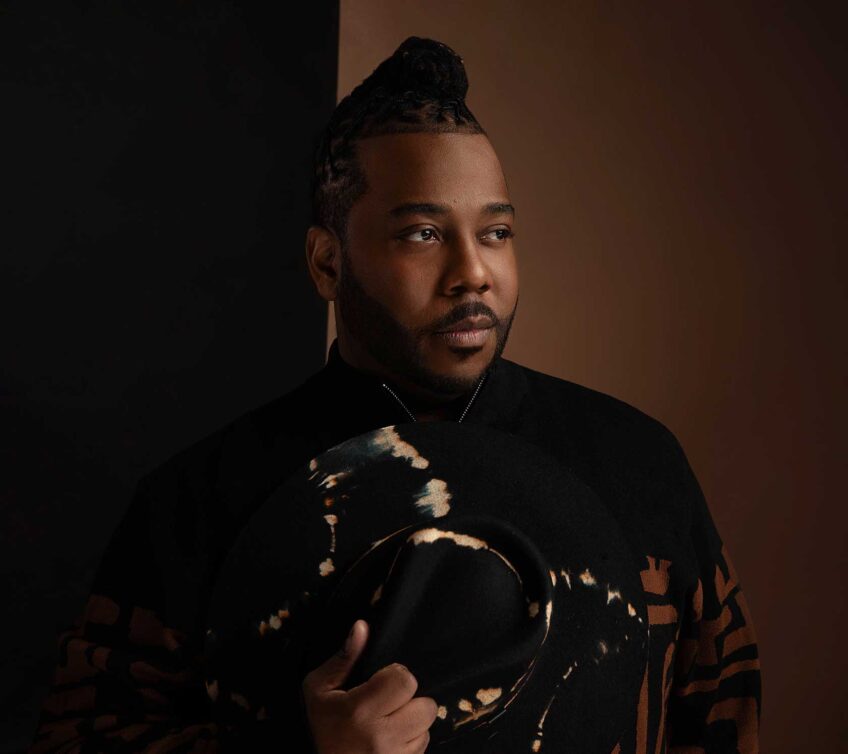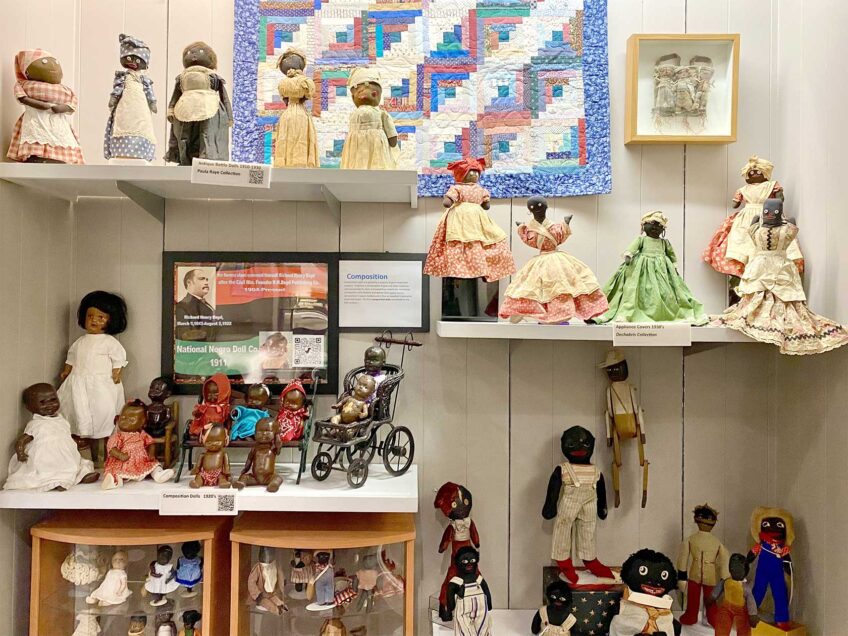

Author: DisneyLaz Alonso (right) says leading “Miracle at St. Anna” as Hector Negron, one of the African American Buffalo Soldiers trapped behind enemy lines in 1944 Italy, opened his eyes to the soldiers’ sacrifices for freedom.
“Miracle at St. Anna,” released on DVD on Tuesday, is not only director Spike Lee’s first attempt at directing a war movie — it’s also the first time that a film about the black soldier’s experience during World War II has ever appeared on the big screen.
Adapted from James McBride’s 2002 novel of the same title, “Miracle” tells the story of four members of the 92nd Division of the U.S. Army, commonly referred to as the Buffalo Soldiers, who find themselves trapped behind enemy lines in a village in 1944 Italy. We meet one of the soldiers, Hector Negron (played by Laz Alonso), at the start of the film as an old man working for the U.S. Postal Service. When a gaunt-looking man with a thick German accent approaches his counter to buy stamps, Negron looks into the man’s eyes, pulls out a gun and shoots him right there. Later, in scenes depicting Negron as a young Afro Latin soldier, the story behind the post office murder unfolds.
Alonso stars alongside Michael Ealy, who plays Bishop, a soldier totally out for himself; Derek Luke, whose character Stamps is zealously committed to stamping out social injustice; and Omar Benson Miller, who plays Train, a man so traumatized by what he’s witnessed at war that he carries the film’s MacGuffin — the head of an Italian statue — in a net around his waist.
“Miracle” marked Alonso’s first leading role in a major motion picture, following supporting appearances in “Stomp the Yard,” “Jarhead” and “This Christmas,” as well as the forthcoming films “Fast and Furious” and the James Cameron-helmed “Avatar.”
To celebrate the DVD release of “Miracle at St. Anna,” Alonso shared with the Banner his thoughts about the experience of making the film, as well as a bit of insight about his view on African American history and racial progress.
How has playing Negron, a leading character, affected your acting career?
First and foremost, this role showed me that I am at the level where I can cover a story from beginning to end as opposed to just being injected into different parts. It changed my way of thinking about accepting a role in a film. I look at the importance of the character in the story now, and it has made me more exclusive when it comes to which characters I want to be now. Spike also gave me a reason to believe in myself as an actor. To me, it is a magical place when you can have the responsibility of carrying a story and really pushing it along. I feel more like an adult actor now.
Also, having the extra bit of Latin in me exposed has helped to bring a different energy to my roles, a different flavor. It allowed me play different roles that I probably would not have been able to had I not had the Spanish language as something to use for characters.
How many languages do you speak?
I speak two languages fluently, Spanish and English. I can survive in France because I studied French in high school, and I also studied Italian as a result of this movie. I was actually shocked at how much Italian I actually learned when I went back to Italy for the premiere of the film. I was like, “Wow!” I can survive out here.
Did you feel as though Negron’s character in this story helped to make clear the role of the Afro Latino soldier during World War II?
Yeah. James McBride did a magnificent job as far as being able to show the intricate themes in his book. Of course, when you’re trying to show that in such a limited time, you have to pick and choose what you should spend time on. If you read the book, my character really didn’t want to be there. He felt like the other Latins who were of lighter skin were chilling in Spain with options while all of this was happening. And because he is of darker skin, he’s not allowed to do what the other Latins are doing. So the book really discusses some of the nuances that are felt deep within the Latin community with regard to people being of different colors, because the issue does exist in America and Latin America. Spike has always exposed Latin culture in all of his movies, so he’s familiar with it. I feel as though the stories could not have been told by two better storytellers who actually give the issue justice.
Being of Afro Cuban descent, how do you identify with the African American experience?
It’s difficult to separate the two because growing up, I was only Afro Cuban inside my home. Once I left my house, I was African American just like everybody else. There really wasn’t a distinction or I didn’t get any extra glory because of my ethnicity. I grew up black or African American, and I celebrated Black History Month and learned about African American history just like all the people around me did.
How did it feel to work with Spike Lee? What kind of special flavor does he bring to the director’s role?
Spike is an icon, but he makes you feel like you’re talking to a peer. Because he has so much to offer, you really forget who he is, and it’s almost like working with one of your boys. Now, that’s not to say that we’re sitting up there clapping hands and clowning around. On the contrary, you feel a big responsibility to him and you don’t want to let him down. It really becomes more of a sense of an allegiance to him than a traditional director/actor relationship.
Aside from reading the book, how much personal research did you have to do to prepare for the movie?
I did my own research by viewing previous films on World War II. Spike also had an extensive library for us to borrow books and documents from. His library included books, articles, pamphlets and propaganda that were disseminated during that time, a lot of stuff from the Library of Congress, modern documentaries — not just about the Buffalo Soldiers, but about certain African American tank divisions that helped to liberate Jews and many other things about the black soldier during that era. We studied a lot of materials from that time period.
Playing Negron, I also had to learn the Italian language that was spoken back then because just as English has changed and slang has changed and certain words are used now that were not used in the ’40s, so has the Italian language. I had to study a lot of what was said back in the thirties in Italy, like the words and slang from back then.
Also, Negron came from a Sicilian neighborhood, so I had to learn the difference between Sicilian and Tuscan dialect and language. At that time, Italy was very fragmented when it came to language, so Tuscany had its own language. Now the entire country speaks Italian, but at that time it was very fragmented.
How did it feel to film a movie in the same exact spot where the historical scenes that you were recreating actually took place?
That part was bone-chilling. It was also humbling because it was wet over there, and it was cold, but when I thought about the fact that at the end of the day I could go back to a hotel room and take a shower when those guys couldn’t do that, it put it all into perspective for me. It opened my eyes about the sacrifices that were made, because studying them is different from when you’re actually there pseudo-living it.
Did you feel as though there was a difference in viewer responses to the film?
Without a doubt. It’s hard to translate African American experience. It’s difficult to do that when you don’t walk in those shoes 24 hours per day and seven days a week. A lot of people who do not experience what it is to be African American find it very hard to relate to. I think that was apparent, as far as the box office numbers (EDITOR’S NOTE: The film grossed less than $10 million in ticket sales worldwide, according to Box Office Mojo, a return far short of its $45 million production budget) as well as some of the feedback.
Spike has been accused of having an agenda with most of his films, but he was very historically accurate. I say this because I read all the things that he read and a lot of the information that he put into the film was not made up. Most of it came from the annals of history — real events.
I think it’s very important to tell the African American experience because if you don’t, it will be forgotten. Spike tried to tell our story in this film. That was his objective. I think he accomplished that, and I also think he was able to tell some of the truth about what was going on behind enemy lines in Germany and Italy at the time, because the truth is that a lot of Italians were fighting for their freedom, despite what history might tell you.
What is your opinion about racial progress in America today?
Sixty years ago, African Americans and white Americans were not allowed to fight side by side, even though they wore the same uniform. Now we have an African American commander in chief of the very armed forces that did not allow blacks and whites to fight together. Anybody who says that we have not made progress is stuck under a rock. It is obvious today that racial progress has been made. Have we made it to the Promised Land? No, we are not there yet. But we are striving.


![Banner [Virtual] Art Gallery](https://baystatebanner.com/wp-content/uploads/2024/04/Cagen-Luse_Men-at-store-e1713991226112-150x150.jpg)

![Banner [Virtual] Art Gallery](https://baystatebanner.com/wp-content/uploads/2024/04/Cagen-Luse_Men-at-store-e1713991226112-848x569.jpg)

